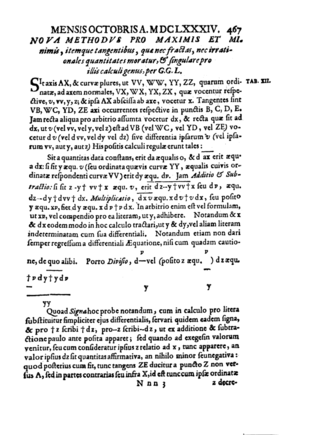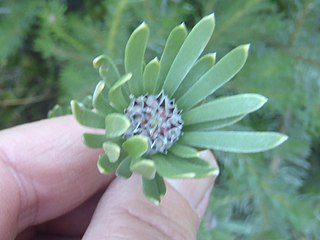A plurale tantum is a noun that appears only in the plural form and does not have a singular variant for referring to a single object. In a less strict usage of the term, it can also refer to nouns whose singular form is rarely used.

The vestibular nerve is one of the two branches of the vestibulocochlear nerve. In humans the vestibular nerve transmits sensory information transmitted by vestibular hair cells located in the two otolith organs and the three semicircular canals via the vestibular ganglion of Scarpa. Information from the otolith organs reflects gravity and linear accelerations of the head. Information from the semicircular canals reflects rotational movement of the head. Both are necessary for the sensation of body position and gaze stability in relation to a moving environment.

The petrous part of the temporal bone is pyramid-shaped and is wedged in at the base of the skull between the sphenoid and occipital bones. Directed medially, forward, and a little upward, it presents a base, an apex, three surfaces, and three angles, and houses in its interior, the components of the inner ear. The petrous portion is among the most basal elements of the skull and forms part of the endocranium. Petrous comes from the Latin word petrosus, meaning "stone-like, hard". It is one of the densest bones in the body.

In the temporal bone, in the portion beneath the falciform crest are three sets of foramina; one group, just below the posterior part of the crest, situated in the area cribrosa media, consists of several small openings for the nerves to the saccule; below and behind this area is the foramen singulare, or opening for the nerve to the posterior semicircular canal.

Plurale is an album by Italian singer Mina, distributed back to back with album Singolare.
Ius singulare is Latin for "singular law". It was special law for certain groups of people, things, or legal relations. An example of this is the law about wills written by people in the military during a campaign, which are exempt of the solemnities generally required for citizens when writing wills in normal circumstances.
Australicium is a genus of two species of crust fungi in the family Phanerochaetaceae. The genus was circumscribed by mycologists Kurt Hjortstam and Leif Ryvarden in 2002 to contain the type species, A. singulare, which is found in New Zealand. The Venezuelan species A. cylindrosporum was added to the genus in 2005.

Bulbophyllum singulare is a species of orchid in the genus Bulbophyllum.
William Tooker was an English churchman and theological writer, who was archdeacon of Barnstaple and later dean of Lichfield.
Serbo-Croatian is a South Slavic language that, like most other Slavic languages, has an extensive system of inflection. This article describes exclusively the grammar of the Shtokavian dialect, which is a part of the South Slavic dialect continuum and the basis for the Bosnian, Croatian, Montenegrin, and Serbian standard variants of Serbo-Croatian. "An examination of all the major 'levels' of language shows that BCS is clearly a single language with a single grammatical system."
Neocarenum is a genus of beetles in the family Carabidae, containing the following species:
Compsibidion is a genus of beetles in the family Cerambycidae, containing the following species:

Nealcidion is a genus of beetles in the family Cerambycidae, containing the following species:

"Nova Methodus pro Maximis et Minimis" is the first published work on the subject of calculus. It was published by Gottfried Leibniz in the Acta Eruditorum in October 1684. It is considered to be the birth of infinitesimal calculus.
Nealcidion singulare is a species of beetle in the family Cerambycidae. It was described by Monné in 1998.
Coomanum singulare is a species of beetle in the family Cerambycidae, and the only species in the genus Coomanum. It was described by Pic in 1927.
Paramoron is a genus of longhorn beetles of the subfamily Lamiinae, containing the following species:

Singaporemma is a genus of Asian araneomorph spiders in the family Tetrablemmidae that was first described by W. A. Shear in 1978.
Schizoglossum is a genus of flowering plants belonging to the family Apocynaceae.

Leucadendron singulare, the Kammanassie conebush, is a flower-bearing shrub belonging to the genus Leucadendron and forms part of the fynbos. The plant is native to the Western Cape where it occurs in the Mannetjiesberg in the Kammanassie Mountains. The plant is rare. The shrub grows only 30 cm high and spreads out. It blooms in October. The plant dies after a fire, but the seeds survive. The seeds are stored in a toll on the female plant and fall out of the toll to the ground after two months where they are spread by ants. The plant is single-faced and there are separate plants with male and female flowers, which are pollinated by insects. The plant grows in crevices on peaks at heights of 2,000 - 2,150 m.








